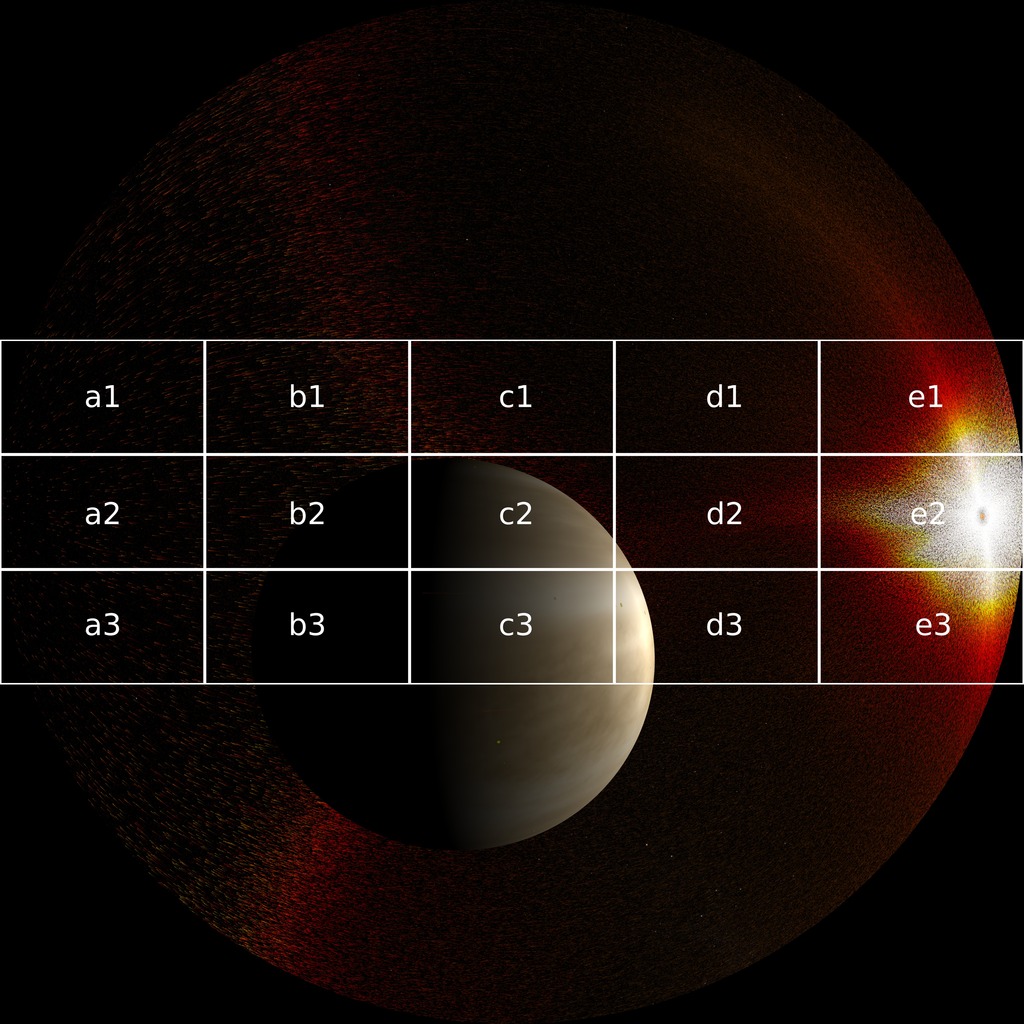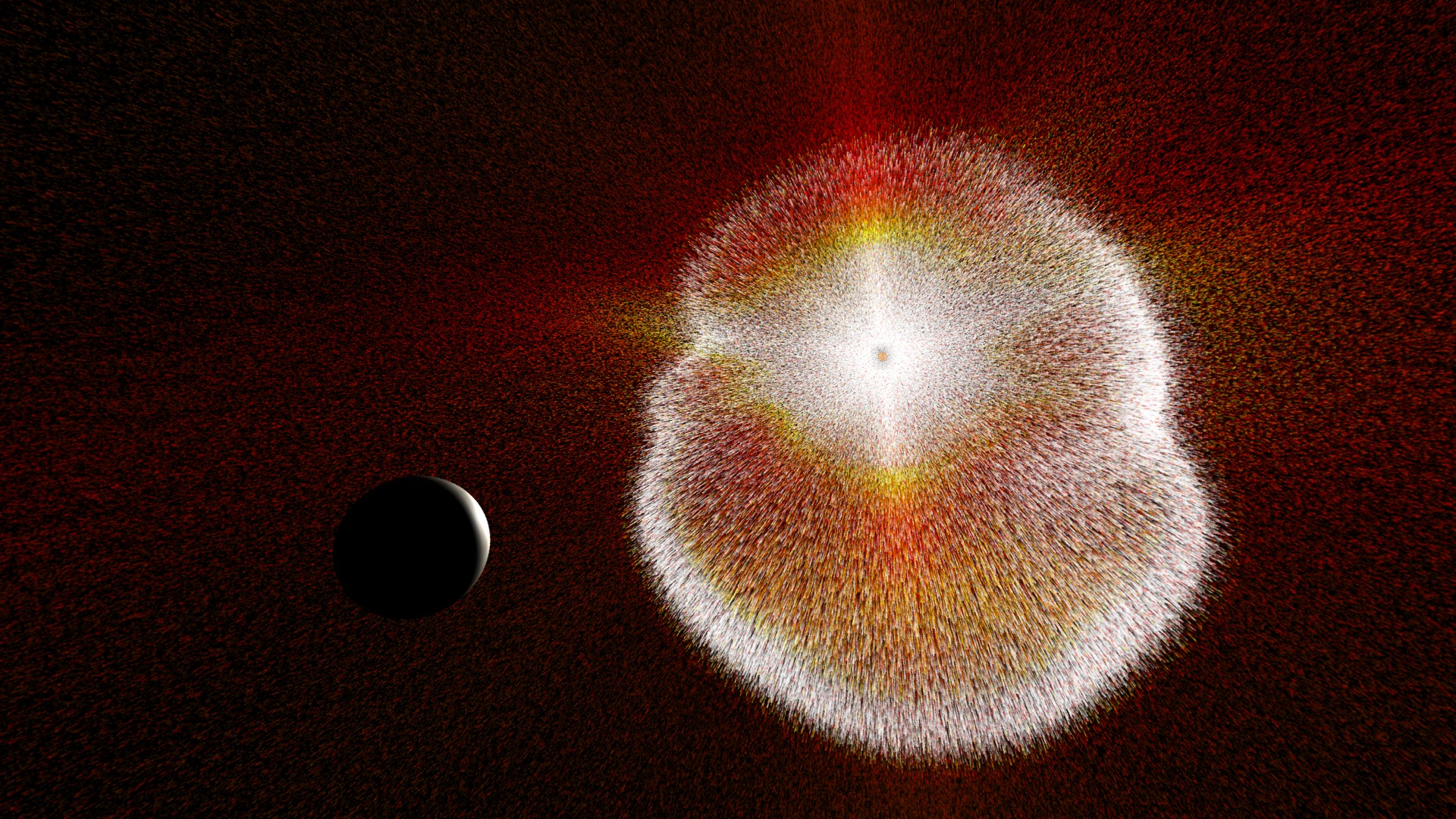The Coronal Mass Ejection strikes the Earth!
This visualization is the sequel to animation ID 3867.
The CME we saw before continues to expand from the Sun, and its outer boundary is approaching the Earth. Will the Earth be pummeled like its sister planet, Venus?
Not this time, for the Earth has a fairly strong geomagnetic field.
The geomagnetic field helps deflect the incoming blast of solar particles around the Earth, dramatically reducing the impact of the event.
It is important to note that the flowing material of the CME are actually ions and electrons far too small to see. This visualization tries to represent the motions of these tiny particle in a form large enough for us to see.
Technical Details
This is the dome show component where the CME strikes the Earth.
The domemaster format was created by rendering 7 separate camera tiles. The tiles were then stitched together to form final domemaster layers at 4096x4096 resolution and 16 bits per channel with premultiplied alpha and no gamma correction. There are 2 domemaster layers that should be composited as follows:
- Earth, Sun and particles
- star field (no alpha channel)
In addition to the final domemaster frames and movies, the individual camera tiles are included as well. Each domemaster layer has a set of camera tiles. There are 7 cameras numbered 00 through 06 that represent the itiles. Camera 00 is in the center of the domemaster, camera 01 is looking below camera 00, cameras 01 through 06 look around the outside of the dome master in counter-clockwise order. These frames are probably only useful if a better re-stitching algorithm is ever required to be run on the tiles.
This is the full movie, composited into Dome Master format, of the CME striking the Earth.

These are frames for the screens of a 5x3 Hyperwall. 
Credits
Please give credit for this item to:
NASA/Goddard Space Flight Center Scientific Visualization Studio
-
Animators
- Greg Shirah (NASA/GSFC)
- Horace Mitchell (NASA/GSFC)
- Tom Bridgman (Global Science and Technology, Inc.)
Release date
This page was originally published on Saturday, September 1, 2012.
This page was last updated on Tuesday, April 23, 2024 at 12:00 AM EDT.
Series
This visualization can be found in the following series:Datasets used in this visualization
-
Enlil Heliospheric Model (Enlil Heliospheric Model)
ID: 685MHD solar wind simulation
See all pages that use this dataset -
BATS-R-US Magnetosphere Model
ID: 686MHD Magnetospheric simulation
See all pages that use this dataset
Note: While we identify the data sets used in these visualizations, we do not store any further details, nor the data sets themselves on our site.

